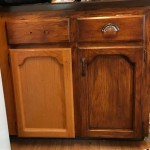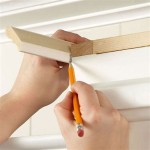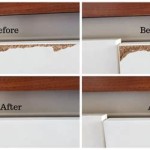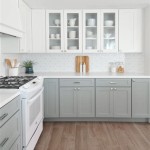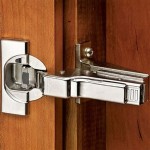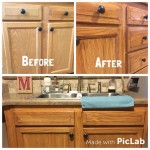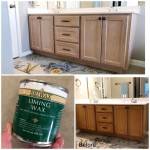Kitchen Cabinet Resurfacing
Kitchen cabinet resurfacing offers a cost-effective and efficient way to revitalize a kitchen's appearance without the extensive demolition and expense associated with a full remodel. This process involves updating the existing cabinet structure by refinishing or replacing the cabinet doors and drawer fronts, and applying a new veneer or finish to the cabinet boxes.
Understanding the Resurfacing Process
Cabinet resurfacing is a multi-step process that begins with a thorough cleaning and preparation of the existing cabinet surfaces. This includes removing any existing hardware, cleaning grease and grime, and repairing any minor damage. Following this, the cabinet doors and drawer fronts can either be refinished by sanding and applying a new stain or paint, or replaced entirely with new ones. The cabinet boxes are then resurfaced with a veneer or laminate, or by applying a fresh coat of paint.
Benefits of Kitchen Cabinet Resurfacing
Resurfacing kitchen cabinets provides a range of benefits for homeowners, including cost savings, reduced waste, and faster project completion. The cost of resurfacing is significantly less than a full kitchen remodel, making it an attractive option for budget-conscious homeowners. Furthermore, by reusing the existing cabinet structure, resurfacing minimizes material waste, contributing to a more environmentally friendly renovation.
Cost Considerations for Resurfacing
The cost of kitchen cabinet resurfacing can vary based on several factors, including the size of the kitchen, the materials chosen, and the labor costs in the specific region. Refacing with new doors and drawer fronts will typically be more expensive than simply refinishing the existing ones. However, even with new doors, resurfacing remains a considerably more affordable option compared to a full cabinet replacement.
Choosing the Right Materials for Resurfacing
A wide range of materials is available for kitchen cabinet resurfacing, offering homeowners flexibility in achieving their desired aesthetic and functionality. These materials include wood veneers, laminates, rigid thermofoil (RTF), and various types of paint. Wood veneers provide a natural and elegant look, while laminates offer durability and a variety of colors and patterns. RTF is a cost-effective option that provides a smooth and consistent finish. Choosing the right material depends on budget, desired aesthetic, and durability requirements.
DIY vs. Professional Resurfacing
Homeowners have the option to undertake a cabinet resurfacing project themselves or hire a professional. While a DIY approach can save on labor costs, it requires significant time, effort, and specialized tools. Professional resurfacing ensures a high-quality finish and efficient project completion, particularly for complex designs or materials. Choosing the right approach depends on the homeowner's skill level, available time, and budget.
Maintaining Resurfaced Cabinets
Proper maintenance is essential to preserving the beauty and longevity of resurfaced cabinets. Regular cleaning with mild soap and water, avoiding abrasive cleaners, and promptly addressing any spills or damage are crucial for maintaining the finish. Additionally, using protective liners in drawers and cabinets can prevent scratches and stains.
Assessing Cabinet Condition Before Resurfacing
Before embarking on a resurfacing project, it's essential to assess the condition of the existing cabinets. If the cabinets are structurally sound and in good condition, then resurfacing is a viable option. However, if the cabinets have extensive water damage, warping, or other structural issues, a full cabinet replacement may be necessary. A thorough inspection will help determine the best course of action.
Complementing Resurfaced Cabinets
Resurfaced cabinets can be further enhanced by updating hardware, such as knobs and pulls, as well as by incorporating new lighting and other design elements. Choosing hardware that complements the new cabinet finish can significantly elevate the overall aesthetic. Additionally, updating the backsplash, countertops, and flooring can create a cohesive and visually appealing kitchen design.
Considering the Kitchen Layout
While resurfacing focuses on the cabinets, it's an opportune time to consider the overall kitchen layout. Minor modifications, such as adjusting shelf placement or adding organizational features, can enhance functionality without requiring major renovations. Resurfacing provides a chance to optimize the kitchen's organization and workflow alongside its aesthetic update.

Cabinet Refacing Vs Painting Which Is Right For You

Cabinet Refacing Process And Cost Compared To Painting

Kitchen Cabinet Refacing Review Why We Chose It For Our Home Kaitlin Madden

Our Refacing Process Kitchen Magic

How Do I Prepare My Kitchen For A Cabinet Refacing Project

Best Kitchen Cabinet Refacing For Your Home The Depot

The Common Problems With Refacing Kitchen Cabinets Guilin

How Does Kitchen Cabinet Refacing Work

How To Resurface Kitchen Cabinets 2024 Guide Forbes Home

Kitchen Cabinet Refacing Makeover A Homeowner S Experience
Related Posts

